- Clone
- In1/CD74 (See other available formats)
- Regulatory Status
- RUO
- Other Names
- CLIP, DHLAG, HLADG
- Isotype
- Rat IgG2b, κ
- Ave. Rating
- Submit a Review
- Product Citations
- publications

-

BALB/c mouse was subcutaneous injected with a million of 4T1 (mouse breast cancer) cells on a fat pad. After a week, the spleen was harvested, embedded in OCT and frozen down. The frozen spleen was sectioned, fixed with 4% paraformaldehyde (PFA) for 10 minutes at room temperature and blocked with 5% FBS for 1 hour at room temperature. Then the section was stained with 5 µg/mL of CD3 (clone 17A2) Alexa Fluor® 647 (green) and CD74 (clone In1/CD74) Alexa Fluor® 594 (red) at 4°C overnight. Nuclei were counterstained with DAPI (blue). The image was scanned with a 10X object and stitched with MetaMorph® software.
| Cat # | Size | Price | Quantity Check Availability | Save | ||
|---|---|---|---|---|---|---|
| 151007 | 25 µg | 128€ | ||||
| 151008 | 100 µg | 306€ | ||||
CD74, also known as CLIP, is a 33.5kD homotrimer and functions as a MHC class II chaperone for exogenous peptides and other MHC class II molecules. CD74 binds MIF and regulates innate and adaptive immunity through CD44 signaling. It is found primarily on B-cells, monocytes, macrophages and dendritic cells, but can also be found on activated T-cells, endothelial and epithelial cells.
Product DetailsProduct Details
- Verified Reactivity
- Mouse
- Antibody Type
- Monoclonal
- Host Species
- Rat
- Formulation
- Phosphate-buffered solution, pH 7.2, containing 0.09% sodium azide.
- Preparation
- The antibody was purified by affinity chromatography and conjugated with Alexa Fluor® 594 under optimal conditions.
- Concentration
- 0.5 mg/mL
- Storage & Handling
- The antibody solution should be stored undiluted between 2°C and 8°C, and protected from prolonged exposure to light. Do not freeze.
- Application
-
IHC-F - Quality tested
- Recommended Usage
-
Each lot of this antibody is quality control tested by immunohistochemical staining on frozen tissue sections. For immunohistochemistry, a concentration range of 5.0 - 10 µg/mL is suggested. It is recommended that the reagent be titrated for optimal performance for each application.
Alexa Fluor® and Pacific Blue™ are trademarks of Life Technologies Corporation.
View full statement regarding label licenses - Application Notes
-
This clone is also known as In1 and In-1. Additional reported applications (for the relevant formats) include: immunohistochemistry1, immunoprecipitation3, and western blotting4.
-
Application References
(PubMed link indicates BioLegend citation) -
- Momburg F, et al. 1986. J. Immunol. 136:940. (IHC)
- Takahashi K, et al. 2009. Respir. Res. 10:33. (FC)
- Meza-Romero R, et al. 2014. J. Immunol. 192:4164. (IP)
- Heinrichs D, et al. 2011. Proc. Natl. Acad. Sci. USA 108:17444. (WB)
- RRID
-
AB_2832531 (BioLegend Cat. No. 151007)
AB_2832531 (BioLegend Cat. No. 151008)
Antigen Details
- Structure
- 33.5 kD and homotrimer.
- Distribution
-
B-cells, monocytes/macrophages, dendritic cells, activated T-cells, and activated endothelial/epithelial cells.
- Function
- MHC class II chaperone, MHC class II molecule sorting, and peptide loading.
- Interaction
- MHC class II molecules and peptides.
- Ligand/Receptor
- Macrophage migration inhibitory factor (MIF).
- Cell Type
- B cells, Dendritic cells, Endothelial cells, Epithelial cells, Macrophages, Monocytes, T cells
- Biology Area
- Immunology
- Molecular Family
- CD Molecules, MHC Antigens
- Antigen References
-
1. Herrero L, et al. 2013. Arthritis Rheum. 65:2724.
2. Geneve L, et al. 2012. Int. Immunol. 24:645.
3. Sille FC, et al. 2011. Immunol Lett. 139:33.
4. Shih NY, et al. 1995. Mol. Immunol. 32:643.
5. Shi X, et al. 2006. Immunity 25:595.
6. Starlets D, et al. 2006. Blood 107:4807. - Gene ID
- 16149 View all products for this Gene ID
- UniProt
- View information about CD74 on UniProt.org
Related FAQs
Other Formats
View All CD74 (CLIP) Reagents Request Custom Conjugation| Description | Clone | Applications |
|---|---|---|
| Purified anti-mouse CD74 (CLIP) | In1/CD74 | FC,IHC-F,IP,WB |
| Alexa Fluor® 647 anti-mouse CD74 (CLIP) | In1/CD74 | FC,IHC-F |
| Alexa Fluor® 488 anti-mouse CD74 (CLIP) | In1/CD74 | FC,IHC-F |
| Alexa Fluor® 594 anti-mouse CD74 (CLIP) | In1/CD74 | IHC-F |
| TotalSeq™-A1043 anti-mouse CD74 (CLIP) Antibody | In1/CD74 | PG |
| TotalSeq™-C1043 anti-mouse CD74 (CLIP) | In1/CD74 | PG |
| TotalSeq™-B1043 anti-mouse CD74 (CLIP) | In1/CD74 | PG |
Customers Also Purchased
Compare Data Across All Formats
This data display is provided for general comparisons between formats.
Your actual data may vary due to variations in samples, target cells, instruments and their settings, staining conditions, and other factors.
If you need assistance with selecting the best format contact our expert technical support team.
-
Purified anti-mouse CD74 (CLIP)
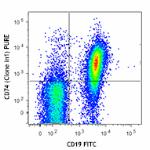
C57BL/6 mouse splenocytes were stained with CD19 FITC and pu... 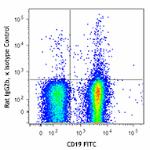
-
Alexa Fluor® 647 anti-mouse CD74 (CLIP)
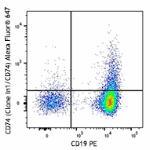
C57BL/6 splenocytes were stained with CD19 PE and CD74 (clon... 
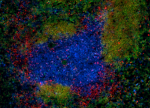
One week 4T1 cells (mouse breast cancer cell line) induced B... -
Alexa Fluor® 488 anti-mouse CD74 (CLIP)

C57BL/6 mouse splenocytes were stained with anti-mouse CD19 ... 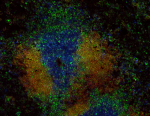
One week 4T1 cells (mouse breast cancer cell line) induced B... -
Alexa Fluor® 594 anti-mouse CD74 (CLIP)
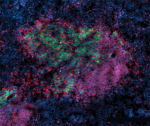
BALB/c mouse was subcutaneous injected with a million of 4T1... -
TotalSeq™-A1043 anti-mouse CD74 (CLIP) Antibody
-
TotalSeq™-C1043 anti-mouse CD74 (CLIP)
-
TotalSeq™-B1043 anti-mouse CD74 (CLIP)

 Login / Register
Login / Register 











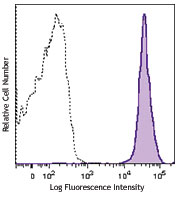

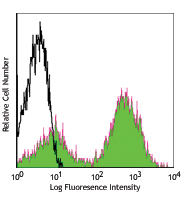
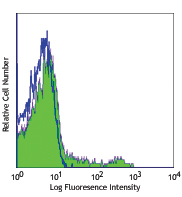



Follow Us